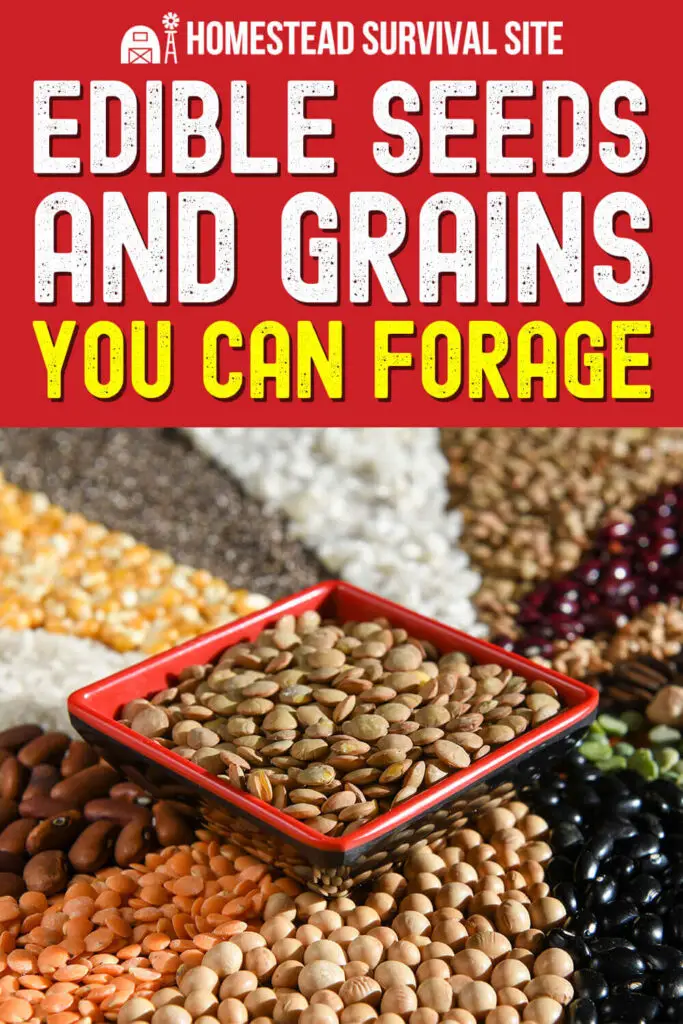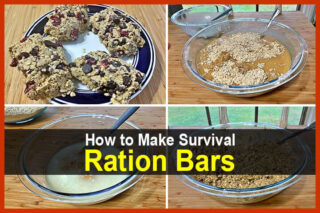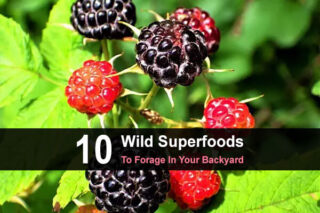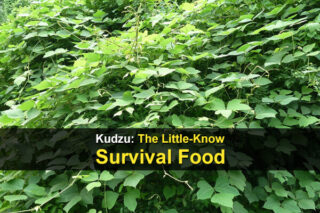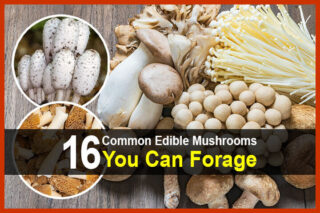Estimated reading time: 12 minutes
When you think about foraging, you probably focus on mushrooms, fruits, and greens. However, there is another category you may be overlooking.
Seeds and grains are staple foods that served our ancestors well and are still plentiful in the wild. In fact, researchers from the University of California Berkley found more than 200 different seeds and grains that Native Americans consumed in California and Oregon alone.
Edible seeds and grains can range in size from the tiny poppy seed to the relatively giant sunflower seed. Many seeds are high in fiber, protein, and complex carbohydrates. You can eat them raw as a snack, add them to other foods for flavor or thickening as you cook, or grind them to make flour.
Here is a list of some of the edible seeds and grains you can forage.
Want to save this post for later? Click Here to Pin It On Pinterest!
1. Amaranth
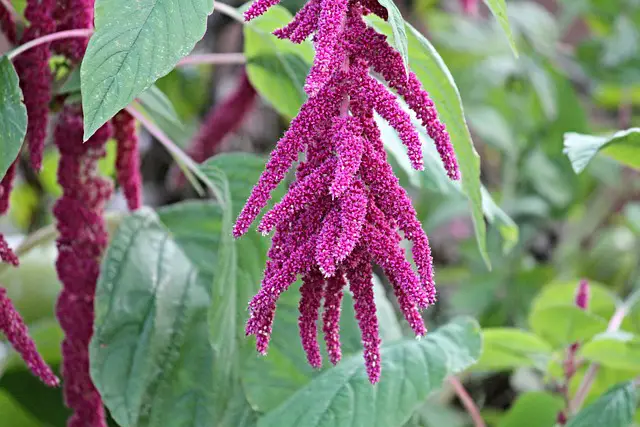
Amaranth, a staple of the Ancient Aztec diet, is a grain that is rich in protein, amino acids, B vitamins, iron, and other minerals. There are about 60 known species of amaranth, which often grows in open sunny areas and in and around cultivated crops.
In late summer to early autumn, the plant's dense purple, bold, or red flowers release small, round seeds that are black or tan in color. You can eat these seeds raw to enjoy their nutty, slightly peppery taste, roast them, or grind them into flour.
2. Chia
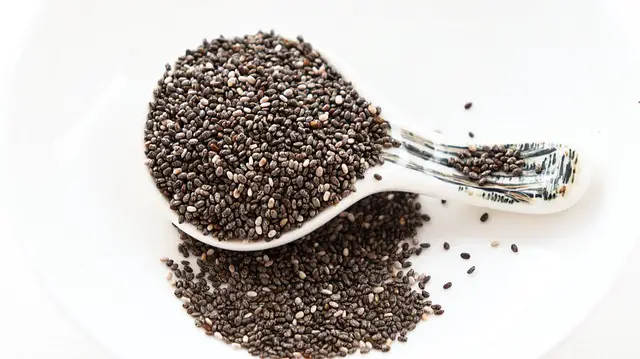
Wild chia flowers are an important source of nectar for bees, butterflies, and other pollinators. Their seeds are packed with fiber, Omega-3 fatty acids, calcium, and protein that are beneficial for humans. When they are roasted, chia seeds have a mild nutty flavor.
According to the California Academy of Sciences, Native Americans harvested chia seeds by bending the stalks over a basket and then beating the seeds out of the prickly, dry heads with sticks. Then, the chaff was fanned away, leaving the seeds to be gathered.
Chia can be found in the open grassy areas of woodlands, sandy washes, dry, open plains, and hillsides. This video shows a simple way to harvest chia seeds by hand.
3. Barnyard Grass
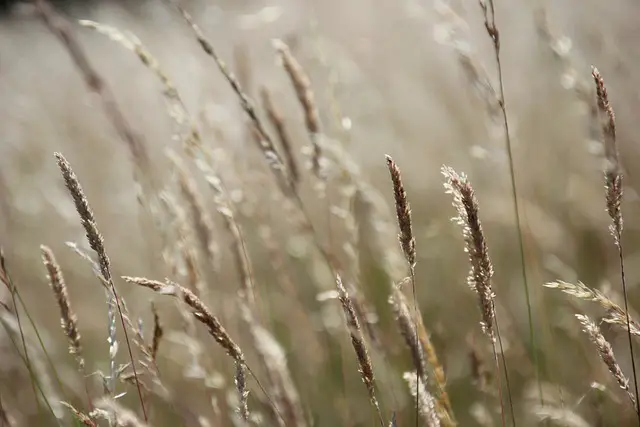
Considered a backyard weed, barnyard grass (also called cockspur grass) is in the millet family. It grows throughout much of the United States and Canada and is usually found in wet areas, including marshes, swamps, and poorly drained areas.
Consuming barnyard grass can help boost HDL (“good”) cholesterol and stabilize blood sugar levels. Its flexible seeds can be ground into flour, roasted, boiled, or even popped like popcorn.
4. Buckwheat
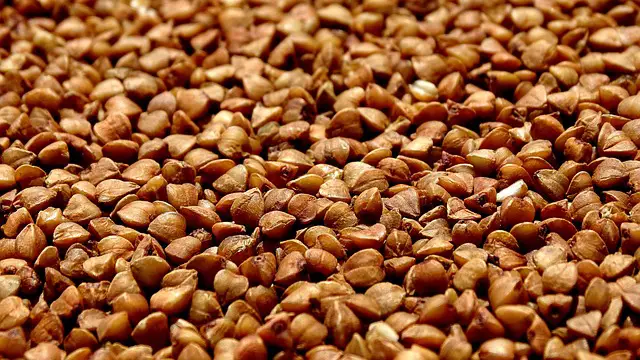
Like amaranth and quinoa, buckwheat is known as a “pseudocereal,” which is the name given to seeds from non-grass plants that are typically consumed like grains. It's also called an “ancient grain” since historians believe it has been cultivated for human consumption for more than 8,000 years.
Buckwheat produces seeds (or groats) that can be ground into flour to make bread, pancakes, and porridge. It is rich in magnesium, fiber, and antioxidants. This article includes a recipe for buckwheat flour pancakes.
Buckwheat seeds have a hull that most people remove before using them in recipes. Buckwheat grows quite rapidly and is often used as a cover crop by farmers.
5. Crabgrass
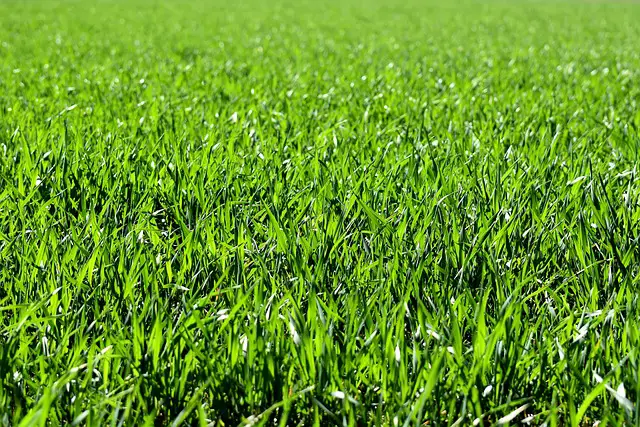
It may seem hard to believe – especially since homeowners hate when it shows up in their lawns – but crabgrass produces seeds that are edible and that provide some nutrients. However, husking crabgrass is very time-consuming.
Crabgrass seed can be used as a flour, grain, or even fermented to make beer. Untoasted seeds can be used like rice in many recipes. A fast-growing plant, crabgrass can produce edible seeds in just eight weeks.
Here's a recipe we found for crabgrass muffins. Try it if you dare.
Ingredients:
- 1 cup flour
- 1 cup crabgrass flour
- 2 tsp baking soda
- 2 tsp ginger (optional)
- 3/4 cup water
- 2 eggs
- 1 tsp vanilla
- 1/4 cup oil
- 1/2 cup raisins
Directions:
- Preheat oven to 350 degrees F.
- Pour flours and baking soda into a bowl before mixing in water, eggs, vanilla, and oil.
- Fold in raisins and fill muffin tins halfway (or pour the entire batter into an 8×8-inch baking pan)
- Bake for about 20 to 25 minutes
- Let cool and remove from tins (or pan)
6. Curly Dock
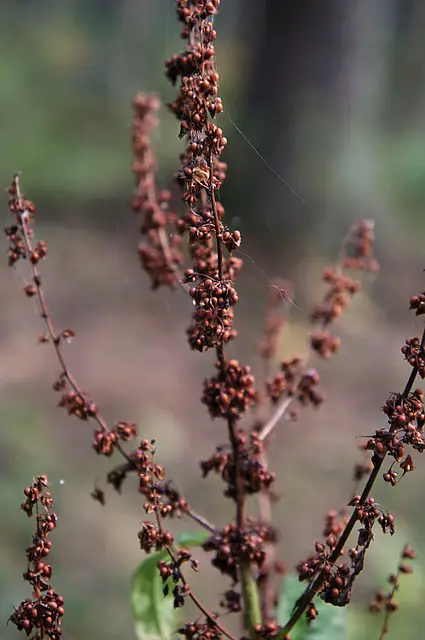
Curly dock (also called “yellow dock” or just “dock”) grows in open fields and meadows. Full-grown plants can have a three-foot-high reddish stalk with large alternate branching simple leaves growing outward from a large rosette. The stalk, roots, and young leaves are all edible.
Green flowers that form at the top of the stalk eventually produce reddish-brown seeds that can be cooked as a grain or ground into flour. It's best to harvest the seeds when they are dry and papery. Dock seeds are a source of protein, fiber, calcium, and other nutrients.
7. Flax
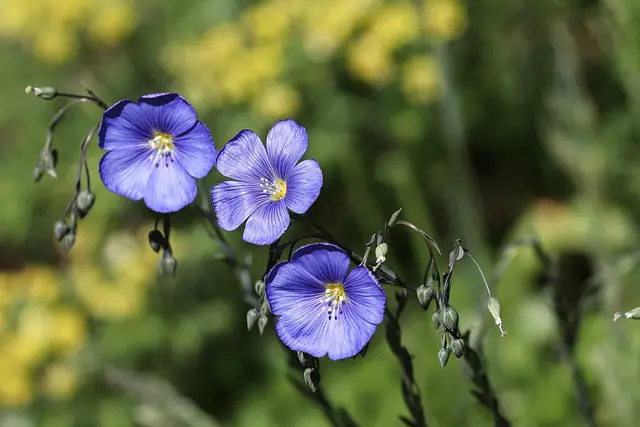
Flax (also called linseed) is rich in fiber, protein, and Omega-3 fatty acids. These nutty-tasting seeds can be eaten raw, ground into flour, or cold-pressed to release flaxseed oil.
The consumption of flax seed may aid digestion, lower bad cholesterol levels, help with weight management, and improve insulin sensitivity. The time to harvest is late summer or early fall when the plant's flowers are gone and the little seed pods appear. This video depicts the harvesting process.
8. Indian Rice Grass
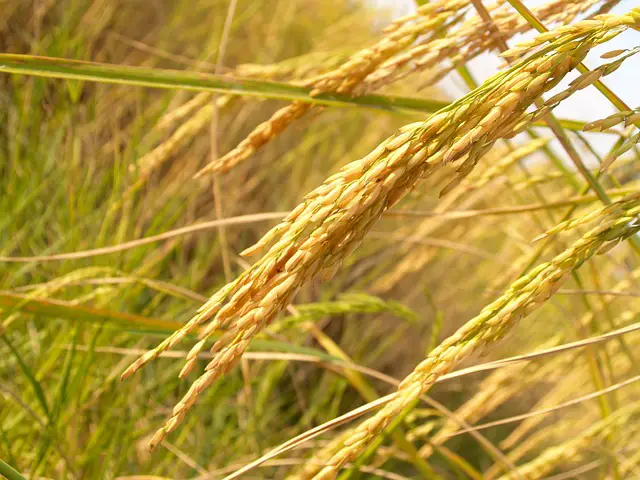
As its name implies, Indian rice grass is a grass species that served as a food source for many Native Americans. Some tribes ground these large easy-to-harvest seeds into flour for bread or mixed them with corn meal to make mush or porridge. Indian rice grass also is forage for wild and domesticated animals.
With information passed from Native Americans, pioneers often used Indian rice grass seeds for the treatment of stomach upset, aching bones, or colic.
9. Lamb's Quarters
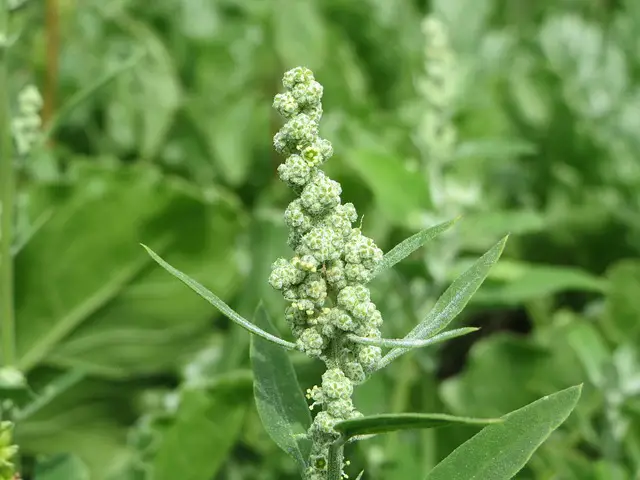
You may already know that lamb's quarters' leaves can be eaten like spinach, but do you know about its seeds?
Thousands of little, shiny, black seeds develop at the top of these plants. Shaking them free into a bucket or basket in late summer or early fall is a relatively easy process.
Lamb's quarters seeds are rich in protein, vitamin A, calcium, phosphorus, riboflavin, manganese, and potassium.
10. Millet
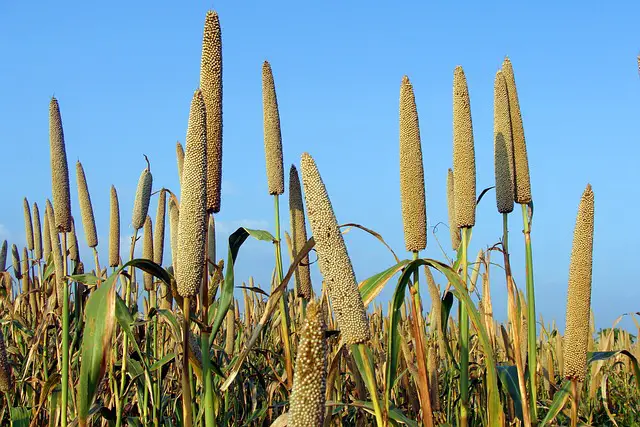
Millet has a nutty, corn-like flavor that makes it appropriate for many recipes. You can forage wild millet to use in meals in the same way you use couscous or quinoa. You also can grind millet into a flour for baked goods. Another option is to eat puffed millet as a snack or breakfast cereal.
Millet grows in gardens, along roadsides, and in fields. Its stem is erect, branching at the base, and it has flat, pointed leaves. Millet seeds can be white, light yellow, or purple, depending on the plant variety.
11. Pumpkin seeds

The pumpkin is one of North America’s oldest domesticated plants, having been cultivated as early as 7,000 to 5,500 BC.
A wild pumpkin has a deeper color and a thicker shell than its domestic counterpart. However, a wild pumpkin's seeds and pulp and softer than a domestic pumpkin's.
Pumpkin seeds are low in carbohydrates and contain a 61 percent protein content. You can eat them roasted or grind them into flour. Here's how to scoop the seeds out of the shell and roast them.
12. Quinoa
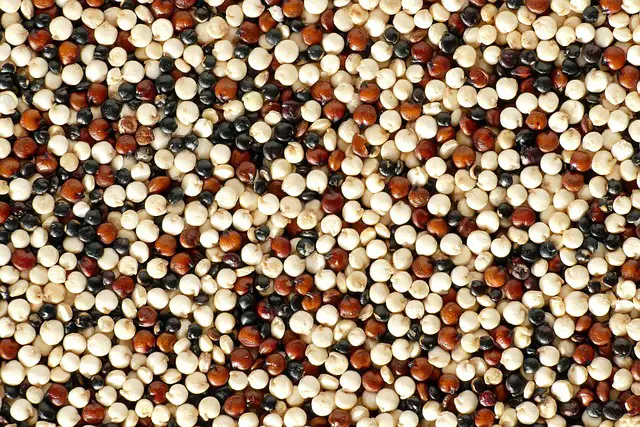
Wild quinoa (also called goosefoot seed) provides protein, fiber, amino acids, and carbohydrates. Since the seeds are also high in saponins, they need to be soaked before eating.
After soaking, you can use the seeds as you would rice or other grains. When cooked, quinoa has a fluffy texture and a slightly nutty flavor.
Harvesting these nutritional powerhouses is easy – you just need to wait until it looks like the flower is dead. That means waiting until the flower head loses its bright color and flops over from the weight of the seeds.
To avoid doing battle with squirrels and birds who are after the same thing you are, you may want to cover the heads with cheesecloth until they are ready to cut and bring them indoors to dry. When they are dry (after two to three days), the seeds will begin to drop off the seed head. At this point, you can wash them to eat raw or roast them in the oven.
13. Wild Oats
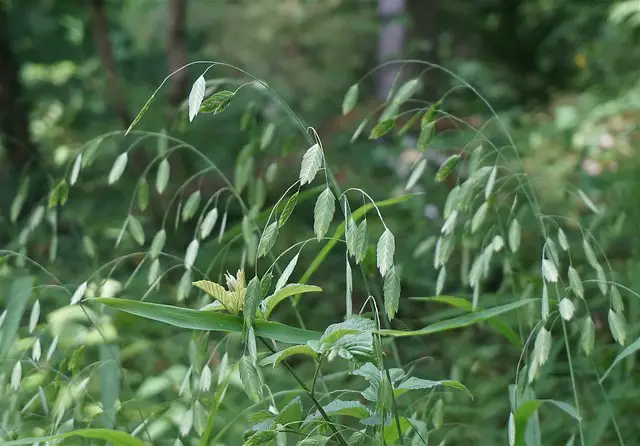
Scientists believe that humans were making porridges with wild oats thousands of years ago. These plants are found growing in orchards, grasslands, crop fields, vineyards, gardens, and along roadsides.
You can harvest wild oats when the stalk and seeds are golden in color and dry. The process involves threshing, winnowing, and chaffing.
Then, you can eat wild oats raw as a snack or in a salad, prepare them in a porridge, or add them to recipes for baked goods.
14. Wild Rice
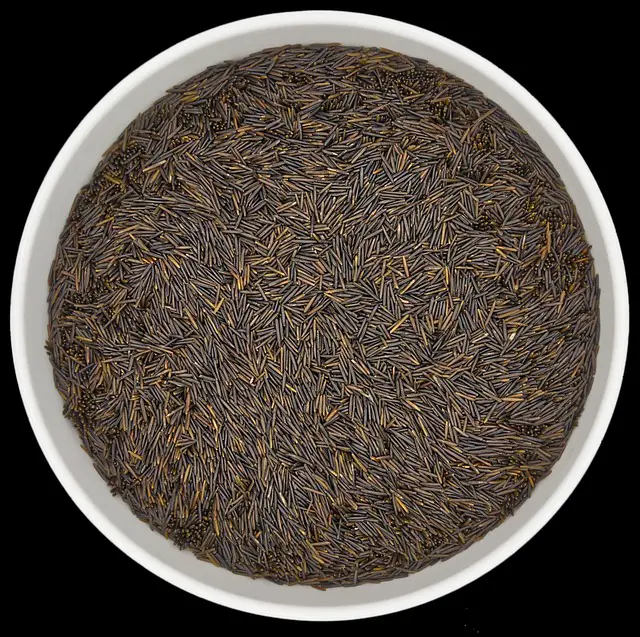
Wild rice is a misnomer because it's not a rice at all. It's a grass seed that is more closely related to corn, wheat, or barley.
Wild rice grows in marshlands, creeks, and rivers in the northern U.S. and Canada. Its seeds float above the water and are often the target of hungry waterfowl.
Wild rice is rich in protein, potassium, and iron and can be cooked as an accompaniment to protein and vegetable dishes.
15. Wild Rye
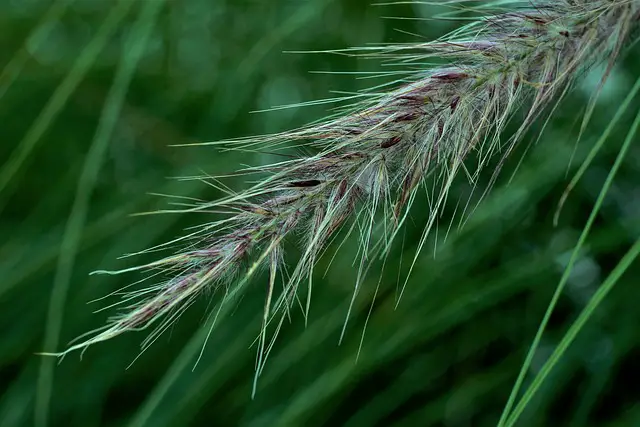
Wild rye (also grown as rye grass) grows in the northern United States and parts of Canada. This wild grain can be used to make a porridge after the rye berries are soaked in hot milk and then eaten like oatmeal. Wild rye is a source of fiber, vitamin E, iron, calcium, and potassium,
Rye berries also can be boiled in salted water and eaten as part of a grain bowl. Another option is to dry and grind the berries into a flour for bread, biscuits, cookies, and crackers.
Foraging Guidelines
It's rule number one for foraging – if you're not 100 percent sure something is edible, don't eat it. Also, be wary of plants that may have been exposed to pesticides or roadway chemicals.
Foraging books, websites, and apps can be of tremendous help in identifying grains and seeds.
Here are a few resources to consider:
- Fearless Foraging Guide by Wild Harvest Publications
- Edible Wild Plants for Beginners by Althea Press
- Bushcraft 101 by Dave Canterbury
- The Ultimate Forager's Harvest Bible by Lesley Tyler Kennedy
- Wild Edibles Forage app
- Edible Wild Plants app
- iNaturalist app
Like this post? Don't Forget to Pin It On Pinterest!
You May Also Like:



